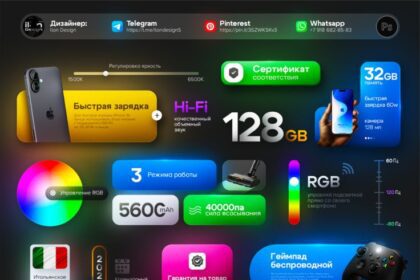You’ve seen it before: that little red label screaming “SOLD OUT” beside your favorite sneaker drop or skincare serum. Suddenly, you want it more. That’s no accident. From luxury fashion houses to online startups, brands are weaponizing scarcity not just to signal popularity but to shape behavior.
Behind every “sold out” tag lies a sophisticated playbook of psychology, data, and digital marketing designed to make consumers crave what they can’t have. This is the story of how the illusion of unavailability became one of the most profitable marketing tactics in modern commerce.
The Psychology of Scarcity: Why “Unavailable” Means “Irresistible”
When something is rare, we instinctively assign it higher value. Psychologists call this the scarcity principle, a cognitive bias first explored by Dr. Robert Cialdini in the 1980s. The effect is simple but powerful: when people perceive a product as limited, demand surges, even if that limitation is artificial.
A 2023 study by the University of Pennsylvania found that items labeled “low in stock” increased purchase intent by 41% compared to identical items without scarcity cues. Brands like Nike and Supreme have turned this into an art form, releasing intentionally small batches known as “drops” to create frenzy and fear of missing out (FOMO).
In the age of algorithms, scarcity isn’t a side effect, it’s a strategy.

The Digital Mechanics: How “Sold Out” Gets Engineered
Modern e-commerce platforms make it easy to control supply visibility. Brands can manipulate inventory thresholds, hiding stock levels or pausing availability to generate demand spikes.
For instance, when beauty brand Glossier released its “Boy Brow” product, it frequently sold out online, yet insiders later revealed that these pauses were part of a planned scarcity loop to keep buzz alive.
According to a 2024 Shopify report, artificial scarcity campaigns can increase repeat website visits by up to 68%. Each “sold out” moment becomes a marketing event in itself, fueling anticipation for restocks, subscriber lists, and social chatter.
This practice mirrors the “Disney Vault” strategy from the early 2000s, when Disney limited access to its movies for years to drive demand and maintain mystique.
Luxury Brands: Where Scarcity Becomes Status
For luxury houses like Hermès or Rolex, scarcity isn’t manipulation, it’s brand DNA. The Birkin bag is notoriously difficult to purchase, not due to lack of supply, but because exclusivity drives aspiration.
Hermès produces an estimated 12,000 Birkins annually, yet demand exceeds 200,000 requests. This deliberate shortfall keeps resale values high and ensures that owning one becomes a social signal of status and access.
Similarly, Rolex restricts production to maintain waitlists stretching up to two years for certain models. Their goal isn’t to frustrate, it’s to curate desirability. As marketing expert Jean-Noël Kapferer notes, “Luxury is not sold, it is desired.”
Fast Fashion Joins the Game
Interestingly, even fast fashion brands have borrowed this playbook. Zara, Shein, and H&M now use micro-drops — releasing smaller, faster product cycles, to mimic the thrill of scarcity.
Zara’s global merchandising director once told Business of Fashion: “If a shopper likes something, they must buy it immediately, because it won’t be there next week.” This built-in urgency keeps consumers checking back, increasing engagement time and average order value.
Unlike traditional scarcity, this isn’t about premium positioning, it’s about speed and psychology. Shoppers don’t want to miss out, even on a $29 dress.
The Ethics Question: Smart Marketing or Consumer Manipulation?
Critics argue that engineered scarcity crosses an ethical line, especially when it creates false urgency. Consumer advocacy group Truth in Advertising has called for clearer disclosure when “sold out” isn’t tied to real stock limitations.
Transparency matters: A 2023 Edelman Trust Barometer report found that 61% of consumers lose trust in a brand if they discover manipulative tactics.
Still, when executed responsibly, scarcity can highlight craftsmanship, sustainability, or exclusivity. The key difference is intent, whether the goal is authentic value creation or emotional exploitation.
What Consumers Can Do
Awareness is your best defense. Here’s how to stay savvy when faced with “sold out” hype:
- Check restock patterns. If an item “sells out” every week, it’s likely a marketing cycle.
- Sign up for alerts selectively. Don’t give brands free data unless you truly want updates.
- Wait 24 hours. The FOMO fades; real desire stays.
- Compare across sites. If multiple retailers show “sold out,” it may be genuine scarcity.
- Understand your triggers. Recognize that scarcity messaging is designed to override logic.
Conclusion: Scarcity Sells, But Awareness Protects
The “sold out” tag is no longer just a stock status, it’s a storytelling tool. Whether used by luxury icons or viral TikTok brands, it taps into the same primal instinct: the fear of missing out.
In a marketplace where perception is often more valuable than product, the best consumers and the best entrepreneurs are those who understand the psychology behind the illusion.






